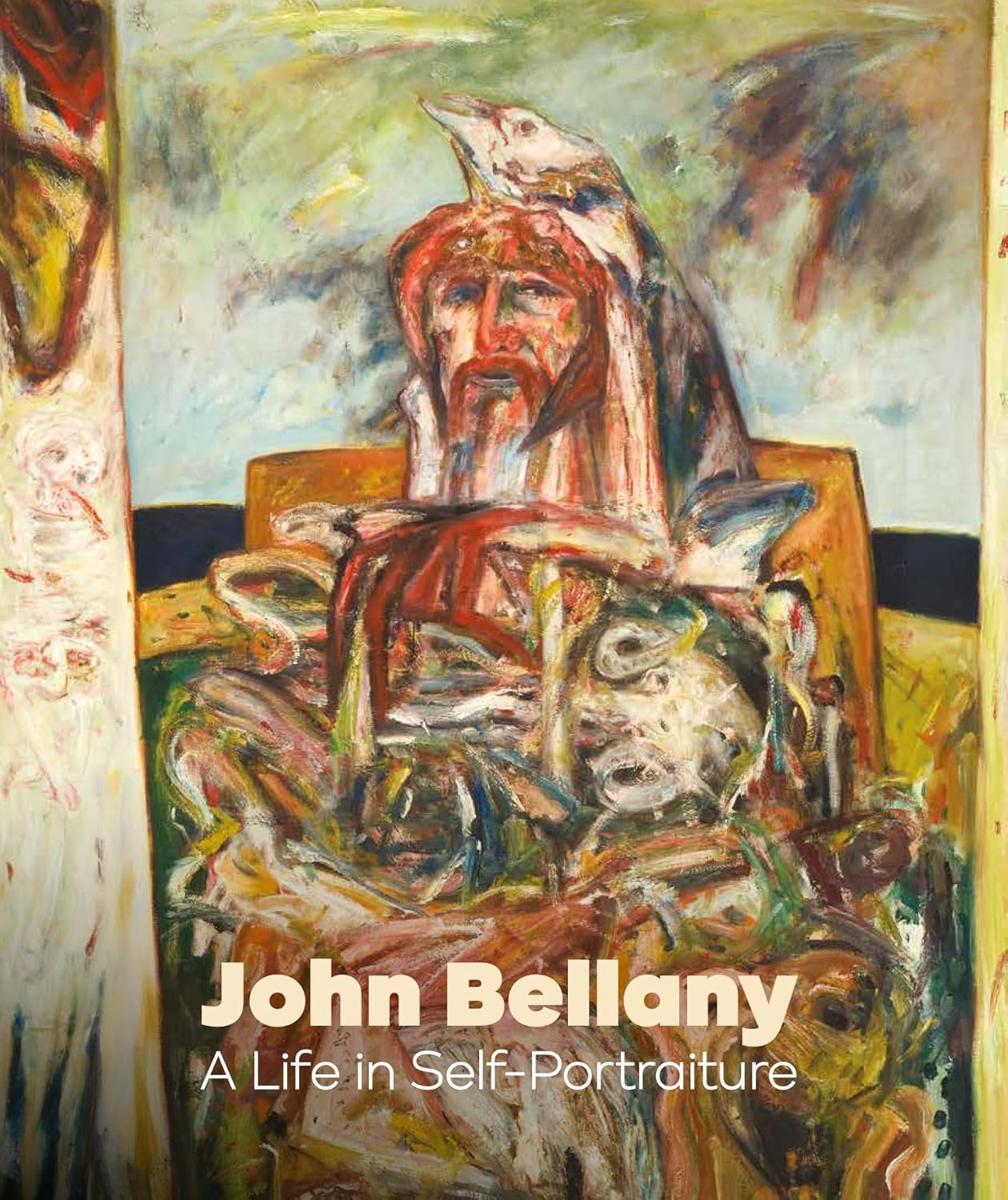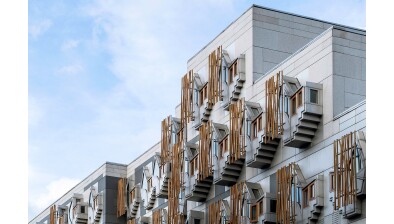Art review: John Bellany – the self portraits

Scotland has never quite had an artist like John Bellany, and probably never will again. Correction: delete ‘probably’. His work has had a force and an impact which few of his generation could replicate, and he was so doggedly sui generis that we must hesitate to classify him as simply Scottish, though that Scottishness was never far below the surface.
Bellany’s output was prolific, his influences diverse and universal. A hint of Goya’s unsettling ‘black paintings’, truly the stuff of nightmares and despair, a nod to Hieronymous Bosch’s macabre garden of earthly delights, or the raw intensity of Egon Schiele. His mastery of colour could be dazzling, his subject matter beguiling, though rarely comforting. Not for him the movie-house fantasies of Jack Vettriano, the calming landscapes of James Morrison, the reductive abstractions of William Johnson.
There is no easy category in which Bellany might be bracketed. He was entirely his own man. ‘Scottish Realism’ was attempted as a label in his early days, when he and his art college friend Sandy Moffat hung their paintings in a sort of ‘Salon Refuses’ alongside Edinburgh’s National Gallery, but that’s a category which can be applied widely – Joan Eardley, Steven Campbell, and countless others, might just as easily fit the bill.
On one level, Bellany certainly wasn’t painting for the bourgeois dining room or the corporate boardroom. On another, his studies of trawlers moored in harbour, punctiliously accurate, could never offend even the meekest sensibilities. In later life he set out his earliest impressions in his own words.
“There would be 52 boats stretching right across the harbour, side by side. It was pure heaven for someone like me, with an artistic bent, and I soaked it up, those early years laying the foundation for what has happened in the rest of my life. I drew and painted at every spare moment and, as I became more involved, the more dedicated I became.”
While Bellany’s mastery of draughtsmanship in his monochrome drawings was controlled and precise, his colours could be vibrant and uninhibited. At his most raw, he set out to be challenging and abrasive, inviting us to share his torments. And what torments! Born in 1942 in the East Coast fishing village of Port Seton his home life was restricted by the self-denying ordinances of Calvinism, something he would never quite shake off.
The 1881 Eyemouth disaster, which claimed 189 lives forty miles down the coast was almost within living memory, so an awareness of the hazards of the fishing industry was deeply imprinted into the close community of his childhood, and never left his adult consciousness. He had spent many of his early years in Eyemouth, his mother’s birthplace, when his father was serving in the navy, until the family moved into a prefab in Port Seton when the war had ended, moving to a larger house after the birth of his sister Margaret some years later.
Death and the sea were always closely related. It was just off Port Seton, indeed, that the first air casualty of the 2nd War occurred when a German Junkers JU88 reconnaissance plane was shot down after flying low over the village school. Three of the crew of four were rescued by local fishermen, one being so overwhelmed with gratitude that he gave his family gold ring to his rescuer, John Dickson, son of the skipper of The Dayspring. John Bellany would later become a casual worker in Dickson’s gutting and curing works, where the women sang hymns as they deftly wielded the knife, and racks of splayed finnan haddies and skate were fated to become symbols in many of his paintings.
Writing of himself many years later, Bellany emphasised the significance of his childhood.
“Still the intensity of my vision is inspired by these moments of exciting joy at the ages of eight, nine, ten and eleven years. It is said that, by the age of seven, the foundation has been laid for all that follows in a person’s life. My paintings, over the years, have embraced many aspects of my own personal journey, informed and inspired by those idyllic first seven years – as a testimony to a life blessed by such a rich and fruitful beginning.”
For an insight into this remarkable man and his character John Bellany: A Life in Self Portraiture tells us everything we need to know about him from the vantage of two of his closest friends, Bill Hare and Sandy Moffat. The book has a dual function. It was written to accompany an exhibition of his self-portraits in Edinburgh’s City Art Centre (until September 28) while at the same time it is a perceptive stand-alone biography of perhaps the greatest Scottish artist of his time without in any way being a promotional hagiography – there is no attempt to disguise the struggles with alcoholism, for example, which almost killed him.
The book’s format is unusual, but astonishingly effective. An eloquent and affectionate foreword by his wife Helen, who first met him in 1961, is followed by Bill Hare’s 16 page ‘in conversation’ interview with Sandy Moffat – a compelling read. Bill Hare’s biographical profile completes the text – and then comes a glorious feast of images – these alone make this book a ‘must buy’ for anyone with even the remotest interest in Scottish art and culture.
With Bellany’s larger canvasses, there was a sense that the man and his furiously applied brushes were seeking to resolve some inner conflict. His 1969 triptych Homage to John Knox would never be allowed over the threshold of any church, being more of a searing denunciation of the reformer and his works than any sort of endorsement. Even so there is an incipient mysticism in this Calvinist apostate who wrote of his strict religious upbringing:
“The ministers were tremendously profound in their oratory – fire and brimstone men, especially Rev. David Wright who preached with a venomous attack on all waywardness. Every sinner was shaking in his boots! It was like ‘Holy Willies Prayer’ by Burns, multiplied by ten!”
To say that this artist was possessed of a saturnine visage would be something of an understatement, and his self portraits generally played up this tenebrous fearsomeness, yet on the few occasions this writer met the man he was unfailingly courteous and affable. He could also liven any party with his mastery of the accordion. Perhaps this was a case which his friend Hugh MacDiarmid would refer to as ‘Caledonian Antizyzygy’ – the idea of duelling polarities within one entity, the exemplar usually provided being James Hogg’s 1824 masterpiece The Private Memoirs and Confessions of a Justified Sinner. It is, indeed, splendidly apposite that Bill Hare’s contribution the book, Portrait of the Artist as a Justified Sinner, begins with an apt quotation from John Calvin!
A Life in Self-Portraiture is much more than a compilation of an artist’s repeated depiction of his own image, in imitation of Rembrandt’s journey into old age. He used himself as a model in his compositions. There he is, for example, accompanying the dead across the River Styx in Charon’s Boat, and seemingly cheering them along with his accordion, which he also plays in a double portrait of himself and David Bowie, a friend and patron, in Bonjour Monsieur Bowie.
It isn’t always easy to determine what John Bellany’s influence was on other Scottish artists, but with his ability to push at boundaries he certainly helped to liberate the imaginations of many of his contemporaries, John Byrne and Alasdair Gray among them. The film Poor Things, based on Gray’s book, was thoroughly de-Scottified by Holywood (despite Willem Dafoe adopting something akin to a Scottish accent) but, with its array of hybrid creatures, there is something decidedly Bellany-esque lurking in the background for those who care to seek such things out.
John Bellany: A Life in Self-Portraiture by Alexander Moffat Bill Hare and Alexander Moffat. Published by Sansom & Company, 112pp, £20.
Exhibition: John Bellany: A Life in Self-Portraiture. From Sat, 31 May 2025 until Sun, 28 Sept 2025. City Art Centre, 2 Market Street, Edinburgh.
David Black’s play, Nancy’s Philosopher, is on at the Edinburgh Fringe until August 16th: Venue 241, The Royal Scots Club, Abercromby Place.










